Table of Contents
ToggleIn the bustling world of software as a service (SaaS), first impressions matter. Enter the SaaS icon—a small but mighty visual that can make or break a user’s experience. Think of it as the friendly face of your application, inviting users in with a warm smile while whispering, “Trust me, I’m worth your time.”
Overview Of SaaS Icons
SaaS icons hold significant importance in the software as a service industry. They create a visual identity that users can quickly recognize, ensuring that the application stands out among competitors. These icons embody features, benefits, and values of the software, which can foster user trust and engagement.
Users often come across various styles of SaaS icons, ranging from minimalistic designs to more complex representations. Icons serve as focal points in user interfaces, making navigation intuitive and enhancing overall user experience. A unified icon design across a product line can improve brand consistency, helping to reinforce recognition.
For effectiveness, SaaS icons must align with the application’s functionality and target audience. Clarity is crucial, as users rely on these icons to make informed decisions when interacting with the software. Additionally, a well-designed icon can evoke feelings of professionalism and reliability, further encouraging users to explore the application’s offerings.
The selection of appropriate colors and shapes also impacts how users perceive SaaS icons. Bright colors may suggest creativity, while more subdued tones might convey professionalism. Shape choices can influence emotions; for example, rounded shapes often evoke friendliness and approachability.
SaaS icons are key elements in shaping user perceptions and experiences. Investing time and resources into effective icon design enhances usability and boosts user satisfaction, leading to improved retention rates. Well-crafted icons ultimately facilitate a positive first impression, setting the tone for ongoing software interactions.
Importance Of SaaS Icons
SaaS icons significantly impact user interaction and perception. These visual elements foster engagement, convey trust, and enhance brand identity.
Enhancing User Experience
Effective icons guide users with clarity. Users easily navigate applications when icons represent functions accurately. Intuitive icons reduce cognitive load, allowing users to focus on their tasks. Consistent iconography throughout the application simplifies user learning, promoting overall satisfaction. Developers can prioritize usability through thoughtful design choices. A well-organized interface encourages users to explore features, leading to higher engagement rates.
Branding And Recognition
SaaS icons play a critical role in establishing brand identity. Unique designs differentiate applications within a crowded market. Cohesive icon sets reinforce brand messaging and values effectively. Users often associate specific styles and colors with a brand, strengthening recognition over time. Consistency in iconography builds trust among users, enhancing familiarity and loyalty. By prioritizing memorable icons, brands can cultivate a strong market presence.
Types Of SaaS Icons
Various types of SaaS icons exist, each serving unique purposes and enhancing user experience. Recognizing these differences helps in selecting the right ones for applications.
Flat Design Icons
Flat design icons emphasize simplicity and functionality. These icons avoid gradients and shadows, focusing on clean lines and bright colors. Users appreciate the minimalistic approach, which promotes quick recognition. Flat icons work well in modern interfaces, enhancing readability across various devices. Their straightforward design often matches contemporary design trends, ensuring alignment with user expectations.
3D Icons
3D icons add depth and dimensionality to user interfaces. These icons utilize shadows and highlights, creating a tactile appearance that draws attention. Users often respond positively to 3D elements due to their engaging visuals. Such icons infuse energy into applications, captivating users and enhancing interactions. Properly implemented, 3D icons can highlight important features or actions within the software.
Line Icons
Line icons feature a lightweight and versatile style. Often characterized by simple outlines without fills, they convey clarity and elegance. Users find these icons appealing for their clean aesthetics and adaptability across various contexts. Line icons integrate seamlessly into any design scheme, making them a popular choice for SaaS applications. Their minimalist design allows users to focus on the content rather than the decoration.
Best Practices For Designing SaaS Icons
Effective SaaS icon design hinges on several best practices. These practices enhance user experience and foster brand recognition.
Scalability And Versatility
Scalability plays a crucial role in icon design. Icons should maintain their clarity and appeal across various sizes, from small mobile screens to larger desktop displays. Versatility also matters; a well-designed icon adapts to different backgrounds and themes without losing identity. By employing vector graphics, designers ensure that icons remain sharp and clear, regardless of size adjustments. Furthermore, scaling must preserve visual elements that users associate with functionalities. For instance, an icon for a cloud storage service must be recognizable in both large and small formats to ensure consistency in user interactions.
Consistency In Style
Establishing consistency in icon style enhances brand coherence. Users respond positively to uniform iconography, as it creates familiarity and trust. Standardizing color schemes and shapes aligns with brand values, making icons easily identifiable across products. Cohesion extends to usage as well; icons must represent similar functions with similar designs. By maintaining this stylistic consistency, developers simplify user navigation, enabling a seamless experience. For example, using rounded edges for all action icons reinforces a friendly and approachable brand image, while sharp lines may convey professionalism. Engaging users through cohesive design leads to improved satisfaction and retention rates.
Tools For Creating SaaS Icons
Numerous tools exist for developing effective SaaS icons. Graphic design software enables creators to produce high-quality visuals that stand out. Examples include Adobe Illustrator, known for its vector graphic capabilities, allowing for scalability without loss of quality.
Free options also exist. Canva offers intuitive design features, making it accessible for users without extensive design experience. Utilizing templates can streamline the design process, helping to maintain consistency across brand elements.
Inkscape stands out as another powerful tool. This open-source software specializes in vector graphics, making it a versatile choice for custom icon design. Designers appreciate its flexibility when adapting icons to various styles.
Figma serves as a collaborative platform. Teams can work together in real-time, streamlining the design process. This tool enhances productivity while allowing for immediate feedback on icon designs, ensuring alignment with branding guidelines.
Sketch caters to designers focused on digital products. Its interface is user-friendly and offers features tailored for interface design, aiding in the creation of intuitive icons that enhance user experience.
Utilizing these tools effectively contributes to the creation of engaging SaaS icons. Designers should prioritize usability while considering elements such as color consistency and scalability. When each tool is leveraged correctly, the resulting icons can significantly impact user engagement and satisfaction.
SaaS icons are more than just decorative elements; they’re essential tools for enhancing user experience and establishing brand identity. Thoughtfully designed icons create a welcoming interface that guides users effortlessly through applications. By prioritizing clarity and consistency, developers can foster trust and engagement, leading to higher retention rates.
In a competitive landscape, unique and cohesive icon designs set applications apart, making them memorable and recognizable. The right tools and best practices empower designers to create impactful icons that resonate with users. Ultimately, investing in quality SaaS icons is a strategic move that pays off in user satisfaction and loyalty.







